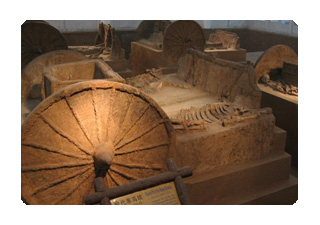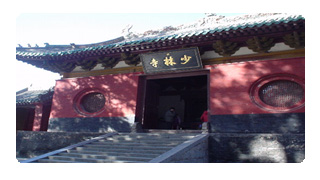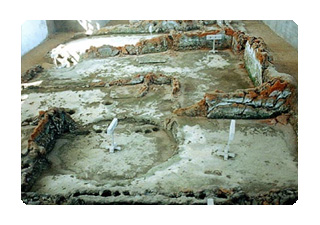Zhengzhou is the capital of Henan Province, north
to Yellow River, West to Songshan, also the political,
economic, educational, scientific and cultural center
of Henan. Zhengzhou has a long history, was once the
hometown of the Chinese cultural ancestor Huangdi,
capital of Shang dynasty built by Shangtang the first
emperor of Shang dynasty. Now it's nationally know
for its developed commerce, trade and abundant mineral
resources.
As being located in the hinterland of China, it is
a north temperate continental climate with distinct
four seasons. The Yellow River and Huai River flow
through there. Zhengzhou is well-known for Kong fu
and rich in tourism resources, Songshan scenic area,
Shaolin Temple, Yellow River scenic area, relics of
dahe primitive village and relics of the shang dynasty
attract countless tourism annually.
Refer to local cuisine, the breakfast (Hu maeuntang,
Water fried bum, salty soybean curd, oiled steam and
steamed pork dumplings), snacks (Tofu, Hot dry noodles,
rice noodle), staple foods, noodles and mosque foods
are quite delicious.
 Yellow
River Scenic Area
Yellow
River Scenic Area
The Yellow River Scenic Area marks an important passage
for the mighty river: a passage that emerges from
the mountains of Weste China and that flows into the
fertile and densely populated Easte China plain. The
south bank of the Yellow River is backed by beautiful
Yue Hill.
A number of cultural points are in the park, including
hovercrafts and speedboats. The park is also peppered
with statues and memorials that commemorate the heroes
and legends of the river area, and it serves as a
reminder of the river's importance as both a nurturer
and destroyer of Chinese civilization. At the foot
of the hill is a statue of a mother and son that is
meant to represent the great mutual affection between
the Yellow River and the people of China.
Located at the place 30 km away from the northwest
of Zhengzhou, the Yellow River Scenic Area lies between
the Yellow River and Songshan Mountain. If you are
passing through Henan, the park is worth a short visit.
It is small, just less than 10 square miles in size.
 Relics
of the Shang Dynasty
Relics
of the Shang Dynasty
The Relics of Shang Dynasty is located in the suburb
of Zhengzhou. It is most famous for the mysterious
pictographs and colorful bronzes, and is one of the
earliest glimpses into early Chinese urban life. The
Shang dynasty was one of the earliest recorded dynasties
in Chinese history, and evidence points to the existence
of an ancient city here as early as 1600 B.C C 1100
B.C.
More than 100 human skulls, some sawed to form the
shape of a bowl, were found in a deep ditch of the
palace. People also discovered eight caves that were
the site of dog sacrifices. Both dog and human bones
were both found in the caves. Today, this area is
a public park and walkway.
More relics of the Shang Dynasty was discovered in
Anyang, Henan Province. From the findings, research
and study is able to be conducted on Chinese ancient
culture. For example, we know the size of this ancient
city and that it tended to be a slave society. There
are also pieces of colorful pottery and inscriptions
on bone that contribute to the world's knowledge of
early man.
Relics of the Shang Dynasty topped the 100 Greatest
Archeological Discoveries of China in the last century
and was also listed in the World Cultural and Natural
Heritage List of the United Nations Educational, Scientific
and Cultural Organization (UNESCO). In 1961, it became
protected by the state as a cultural and historical
relic.
 Shaolin
Temple
Shaolin
Temple
The temple is situated in the heart of Mount Songshan
the Central Sacred Mountains and is named for its
location in the dense forest at the northe foot of
Shaoshi Mountain, a major part of Songshan. It is
13 kilometers northwest of Dengfeng and about 90 kilometers
southwest of Zhengzhou. It was constructed in the
Northe Wei Dynasty. The temple has more than 1,500
years of history, with a total area of roughly 30,000
square meters. Shaolin Temple is the ancestral temple
of the Zen Sect of Chinese Buddhism and the origin
of the world-famous Shaolin Kungfu. It is a top tourist
attraction in China with both locals and foreigners.
Bodhi Dharma, the founder of the Zen Sect of Indian
Buddhism, sat in meditation in a mountain cave for
9 years and preached Zen in China for the first time.
Dharma is known as the Founder and Shaolin Temple
as the birthplace of Chinese Zen Buddhism.
The Tang Dynasty was the first golden period for the
temple, with a total of 2,500 monks living in the
temple. The prosperity was attributed to the historical
fact that 13 Shaolin monks good at cudgel fighting
bravely and rescued Li Shimin, who was a Tang Dynasty
king who later became a great emperor in Chinese history.
The Shaolin Temple film was based on that story. So
Shaolin Kung Fu is named after the temple and the
temple.
Other attractions at the temple include the Forest
of the Pagodas, which is located about 500 meters
west of Shaolin Temple. It is the cemetery of the
senior monks that lived during different dynasties
and boasts the largest complex of Buddhist pagodas
in China, with about 240 pagodas from the Tang to
Qing dynasties. The pagodas are made of stone and
brick and vary in height, from 1 to 7 stories and
with the tallest reaching 15 meters. The structures
are engraved with inscriptions and Buddhist images.
 Relics
of Dahe Primitive Village
Relics
of Dahe Primitive Village
The Relics of Dahe Primitive Village, located at the
place 12 km away from the north of Zhengzhou, covers
an area of 300,000 square meters with the 3 different
historical relics of the Yangshao Culture as well
as Longshan Culture and the Shang Dynasty Culture.
Its cultural strata reach 4-7meters in thickness.
The housing remains are the most interesting aspect
of this cultural site. Over 30 dwellings were unearthed
which had different architectural characteristics
and were successfully able to be dated. In particular,
the wall of the Number One Dwelling is 1 meter high
and has about 5,000 years of history, and can be traced
back to the late period of the Yangshao Culture in
the Neolithic Age. It is the only dwelling in the
world to survive from this time period. The cultural
relics unearthed mainly include red and black pottery,
other colored pottery, and white clothes.



